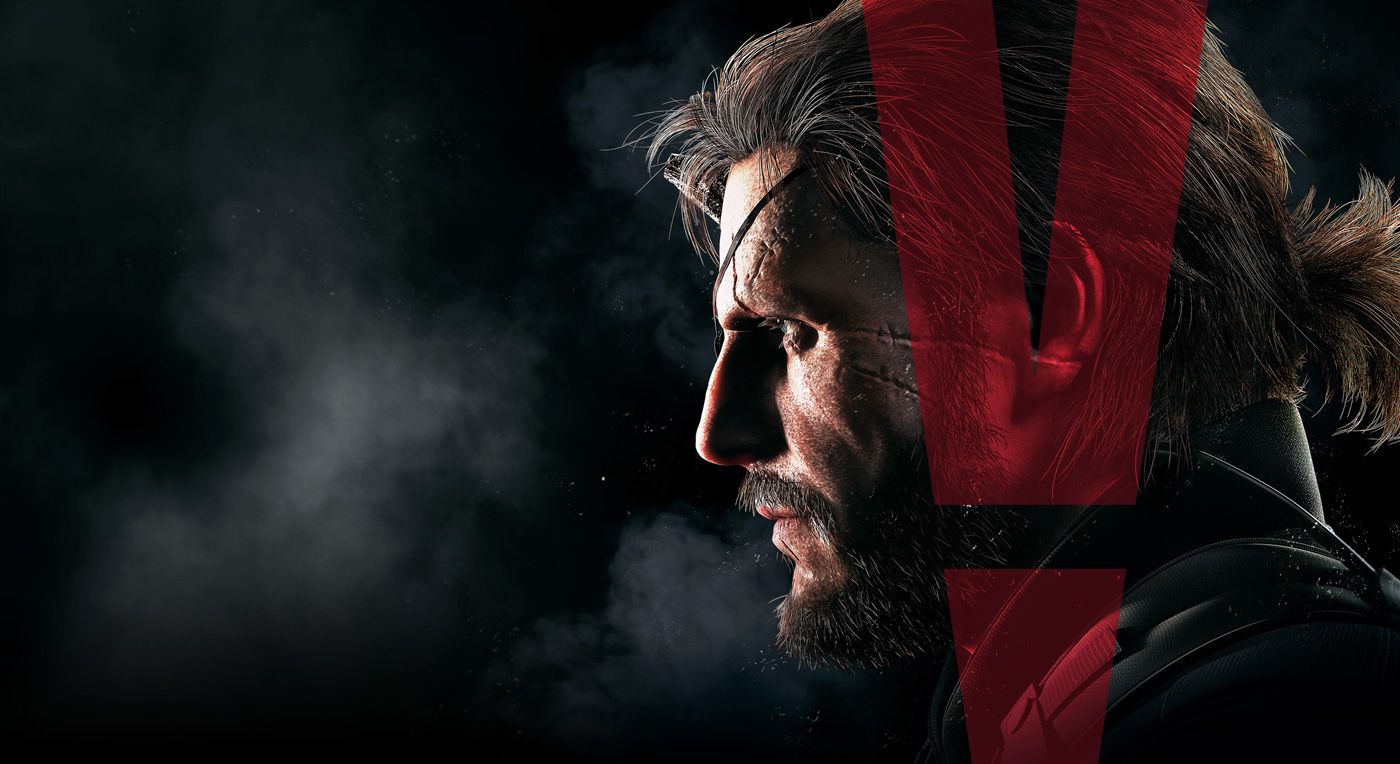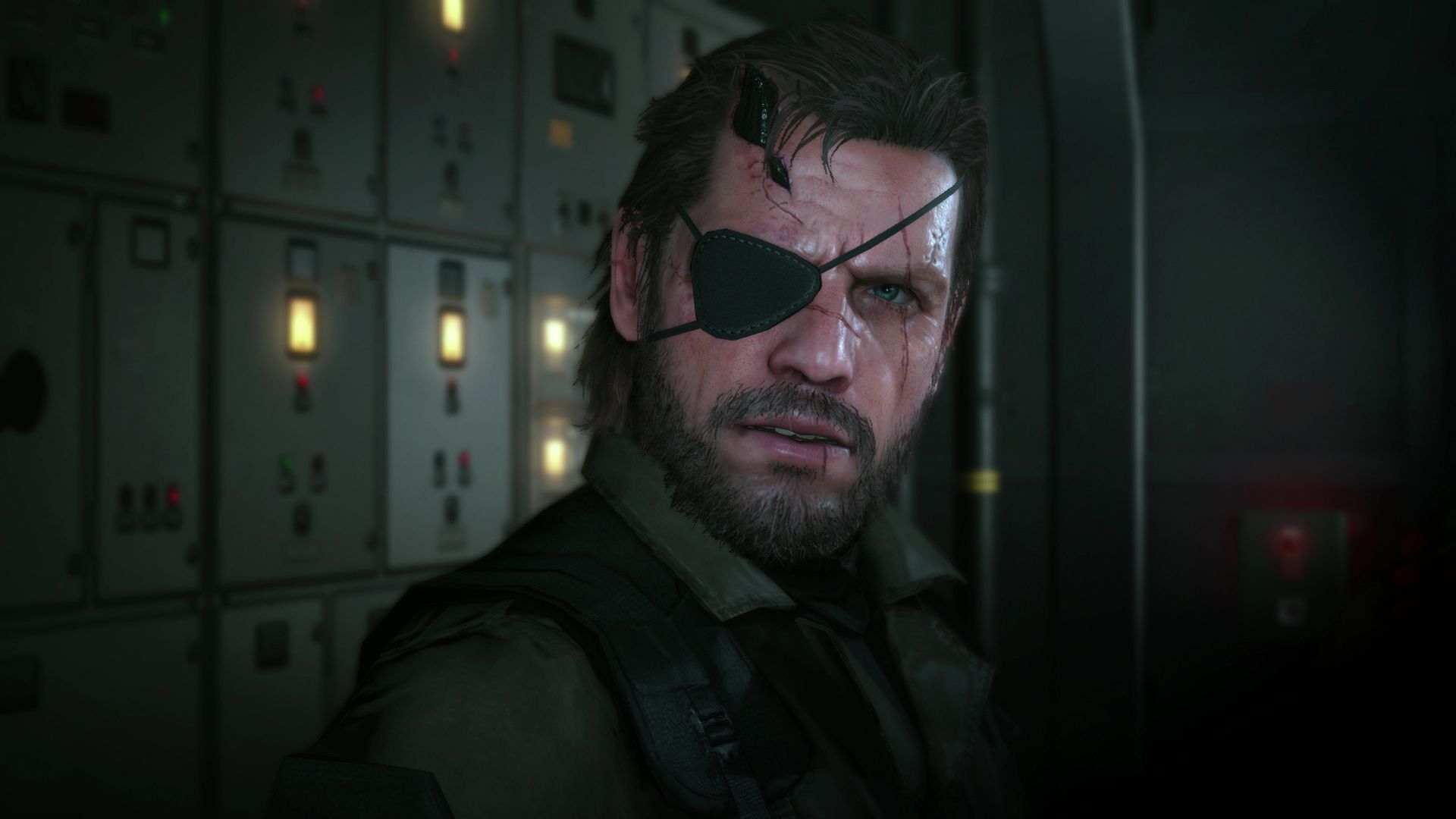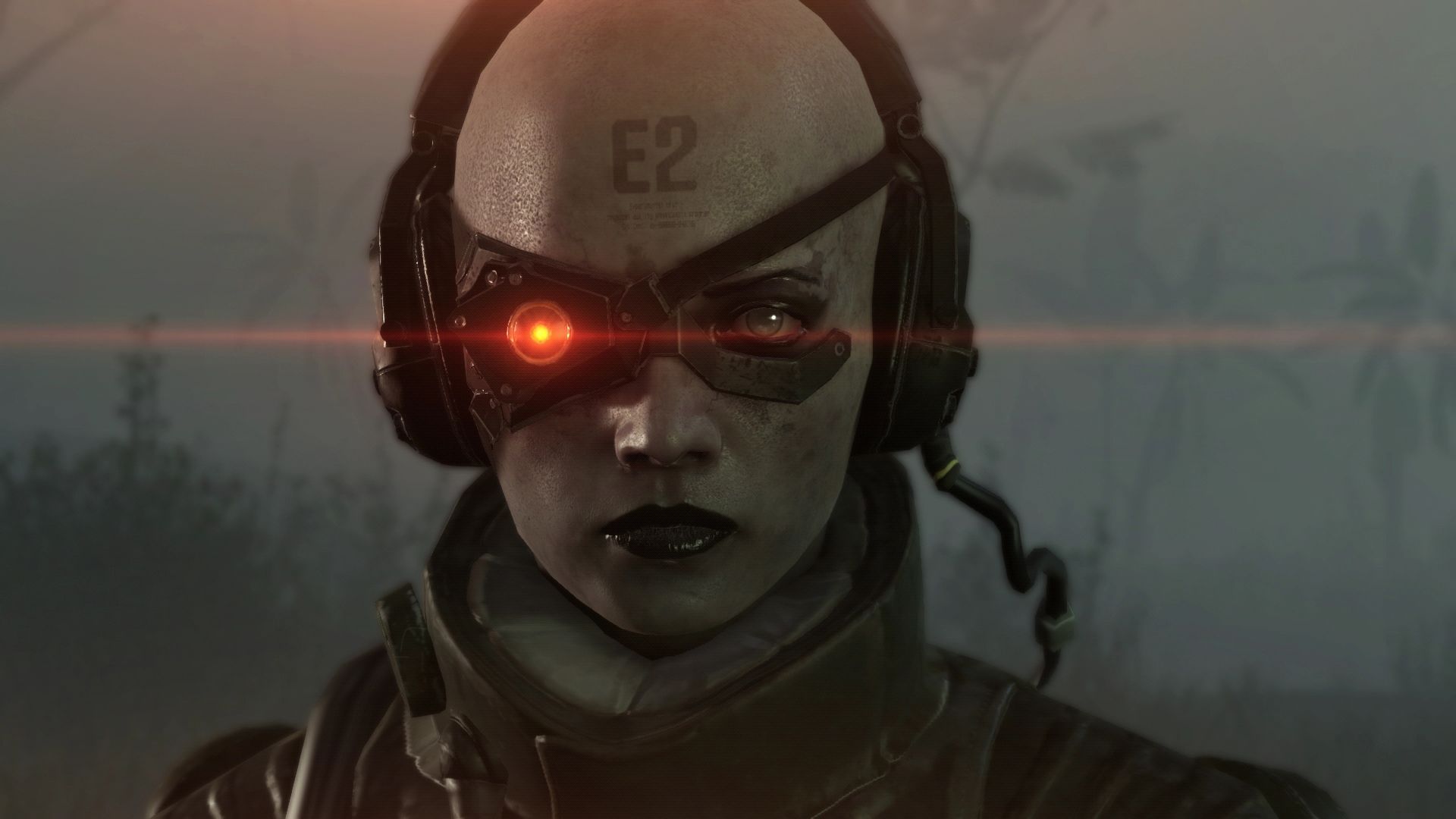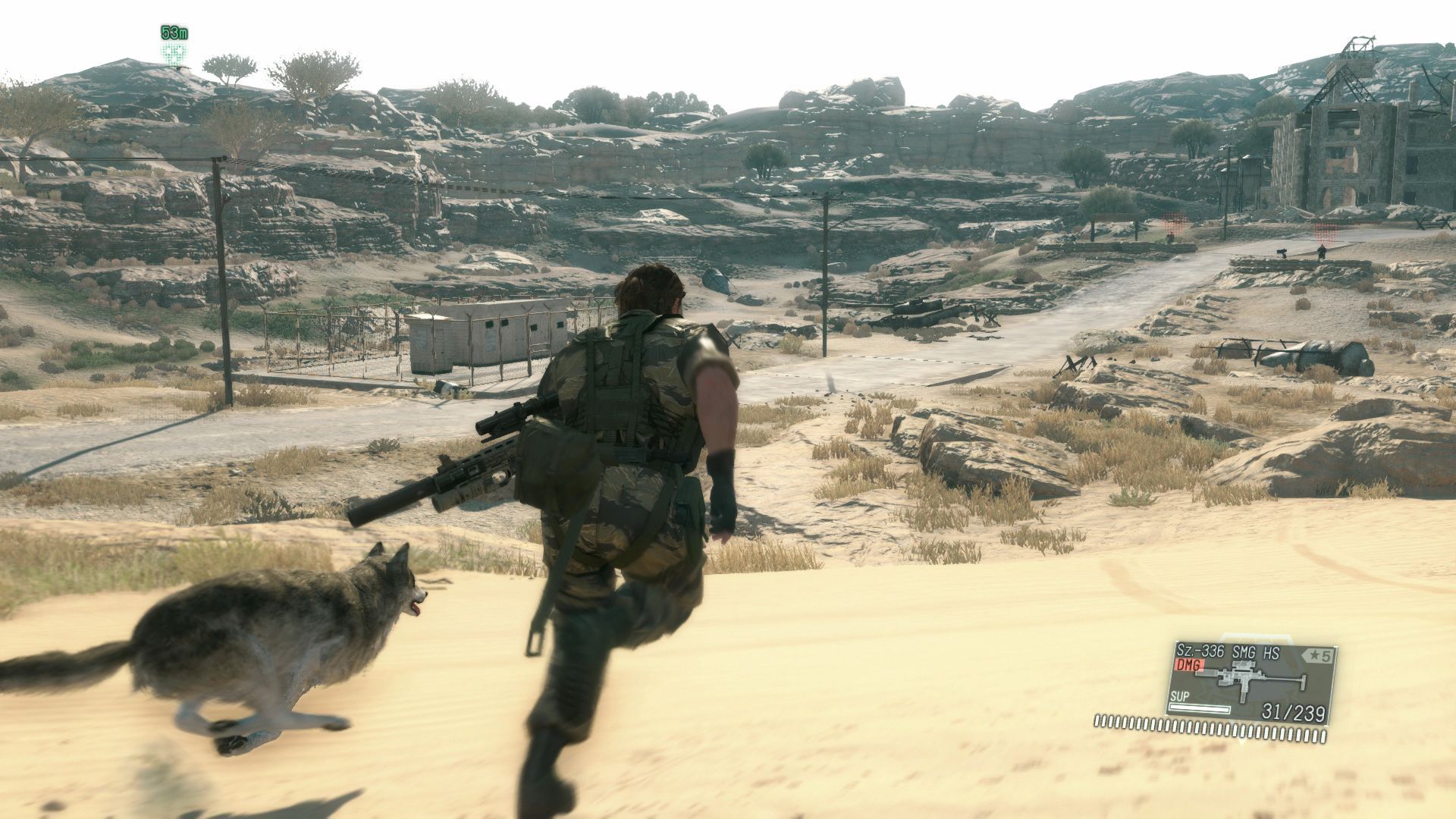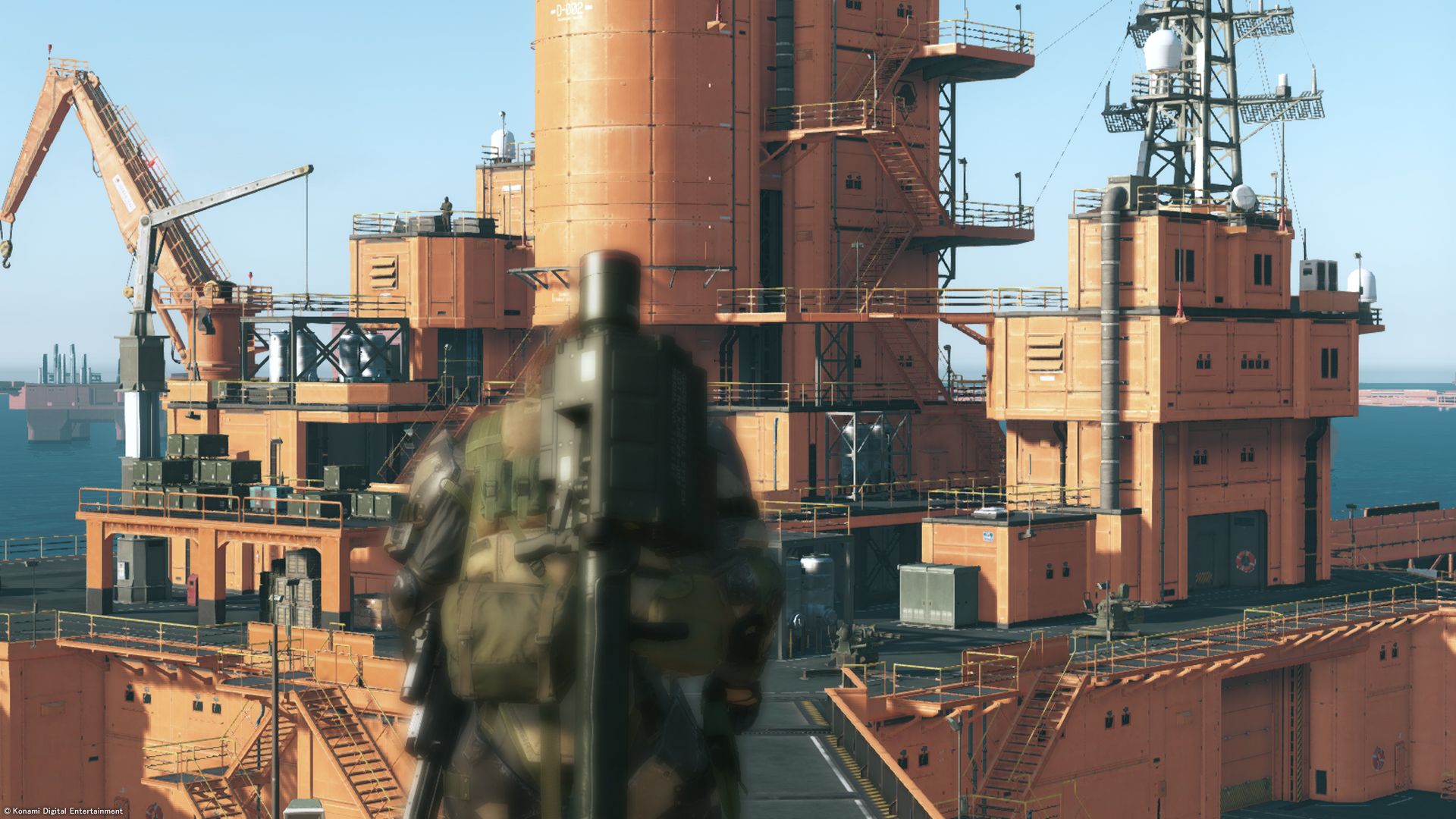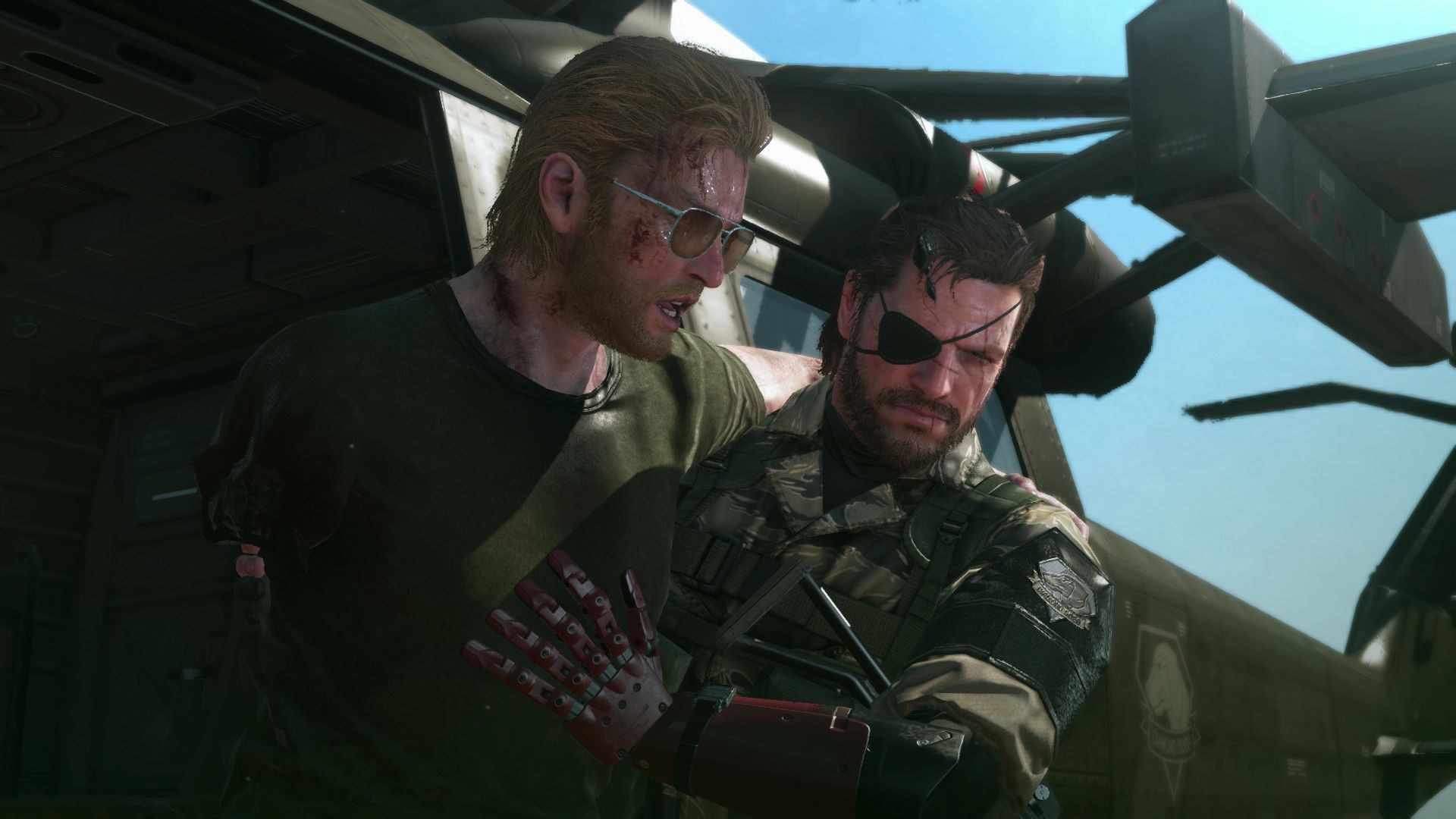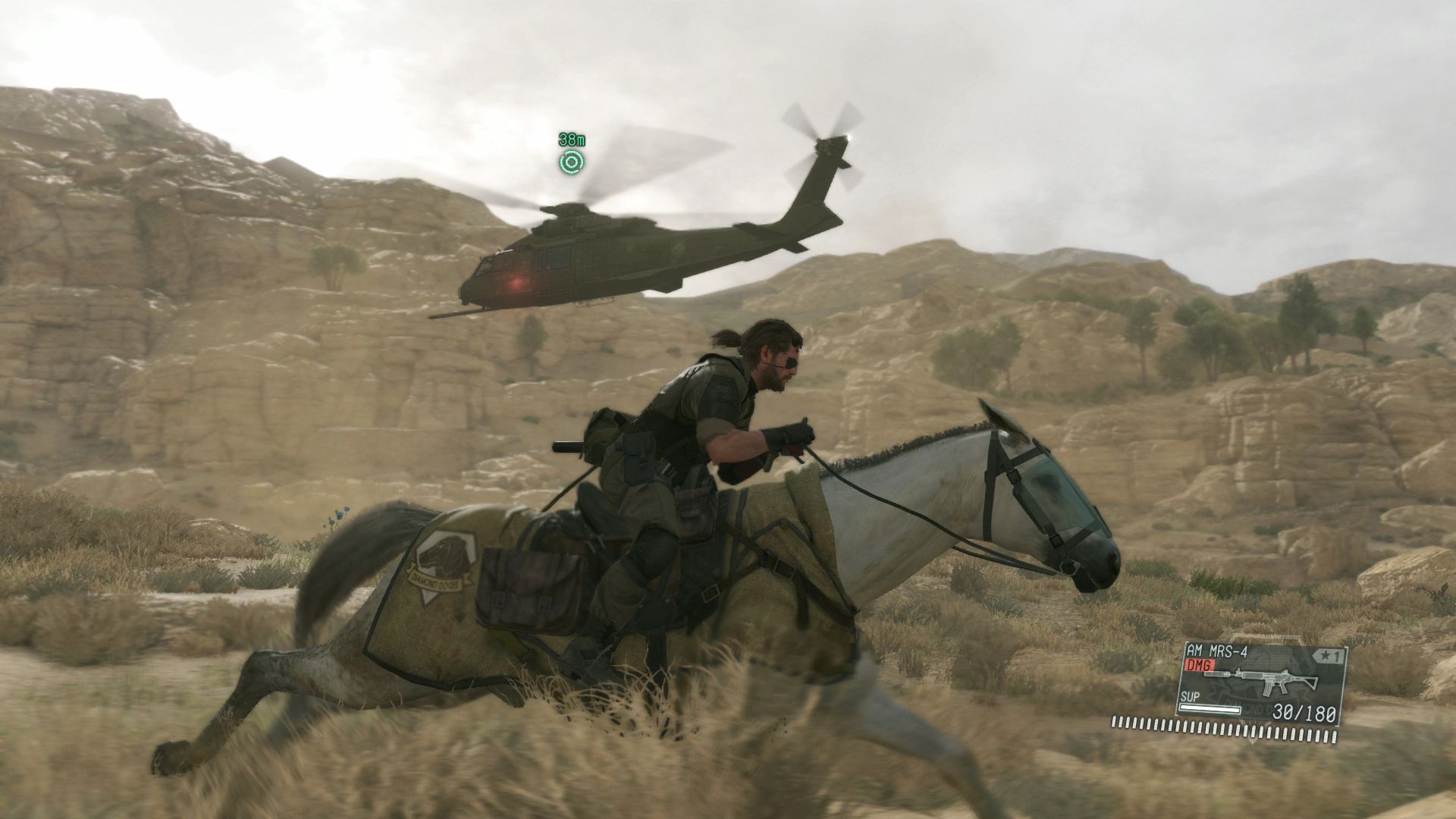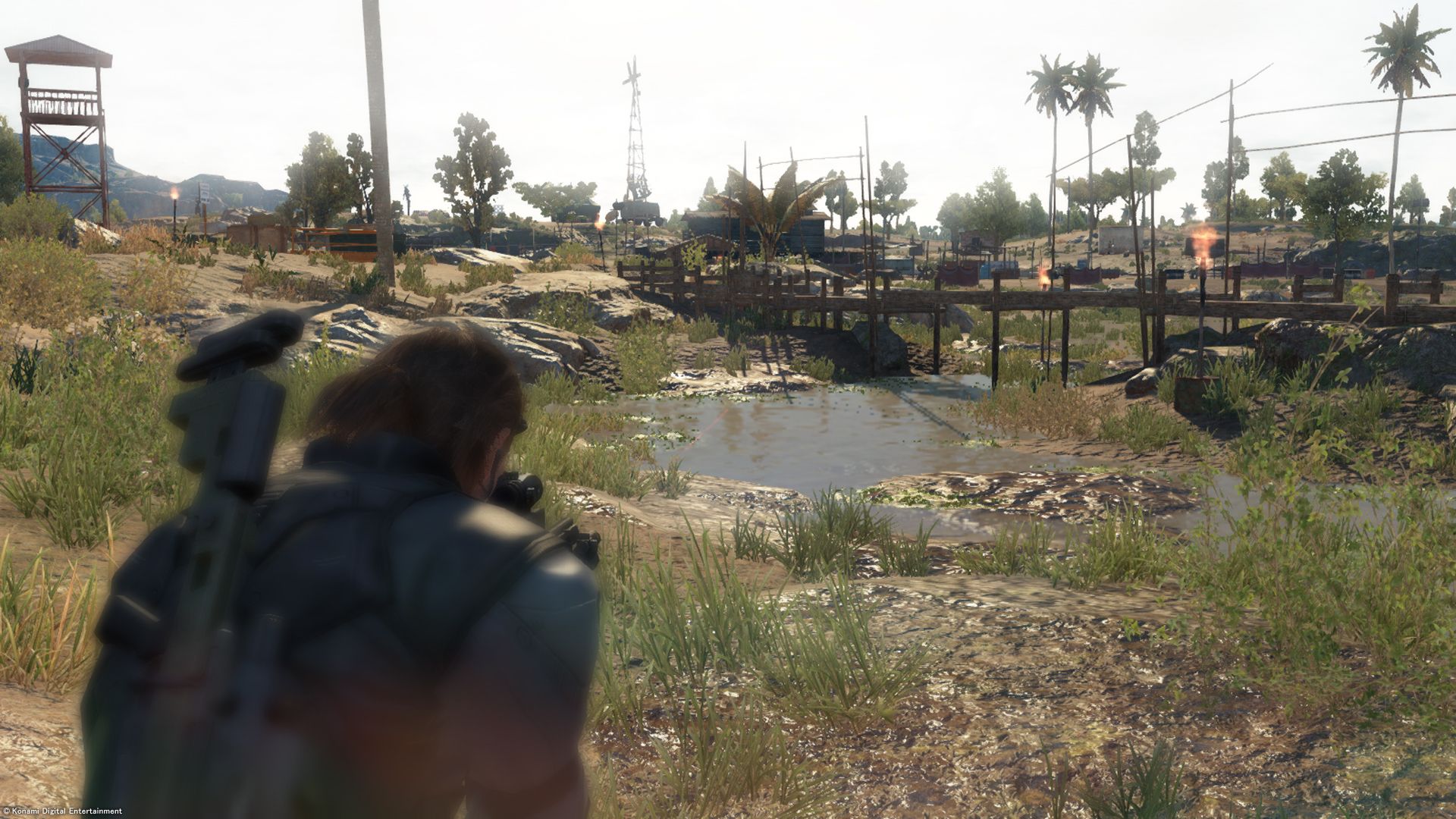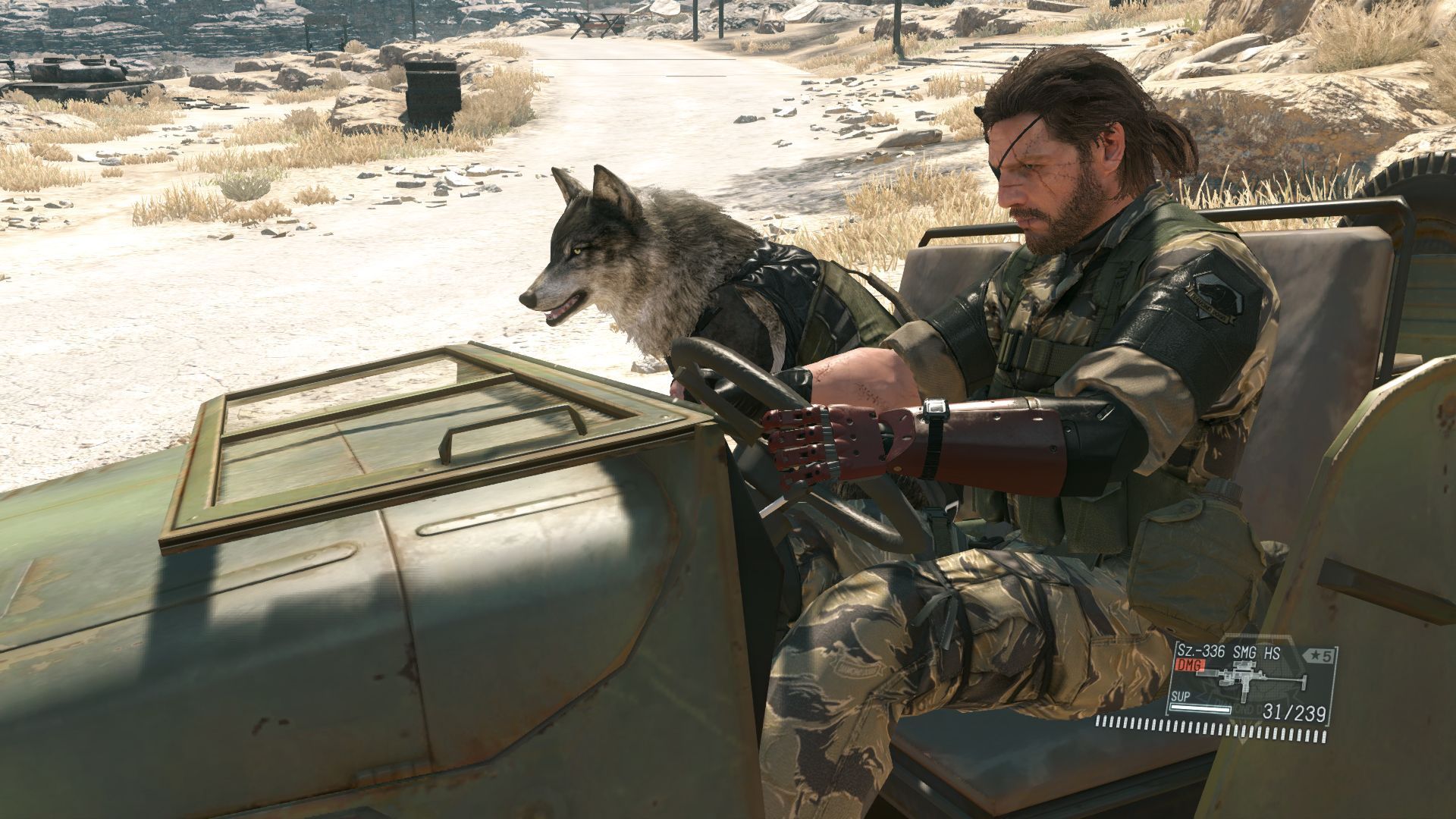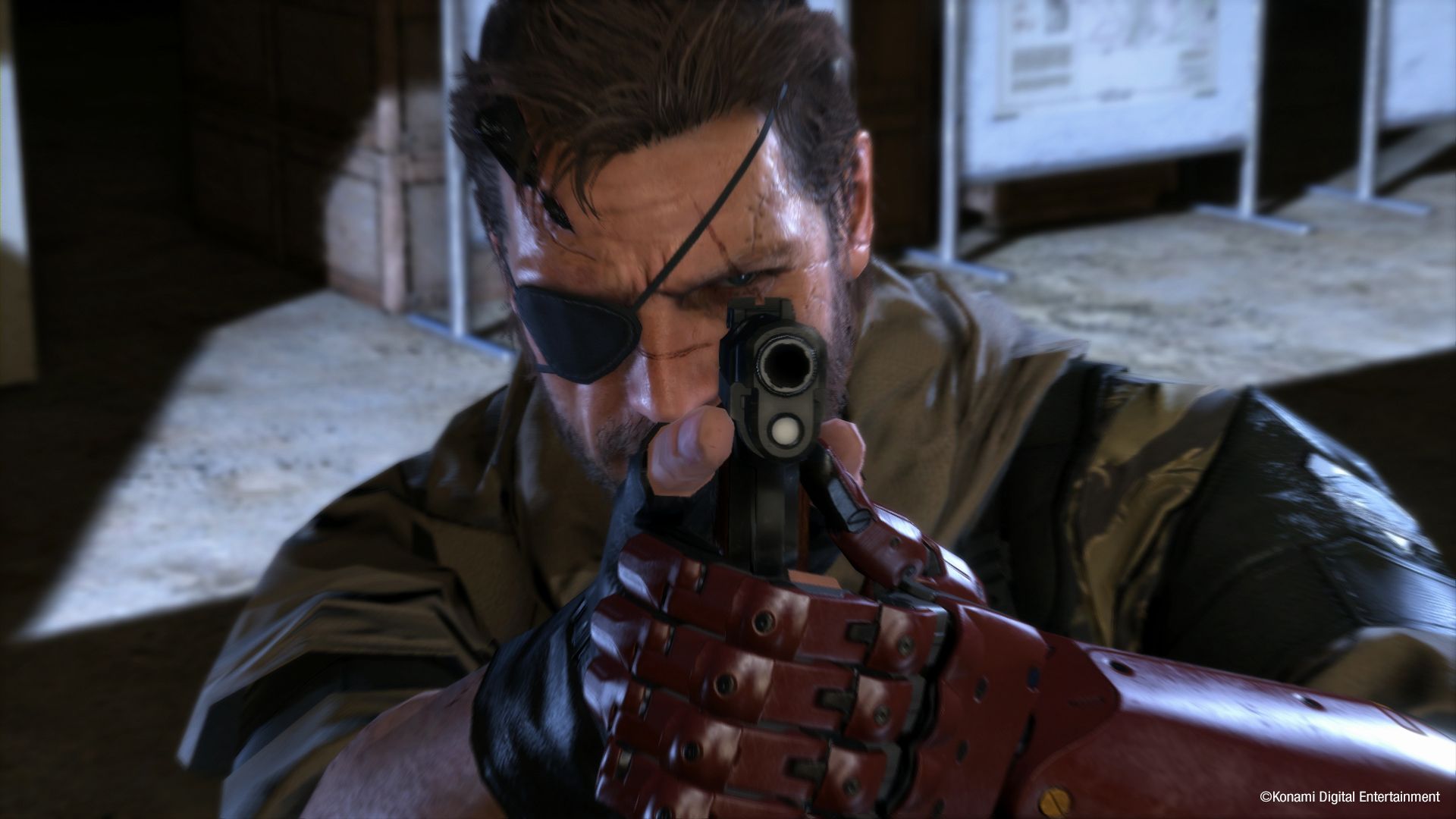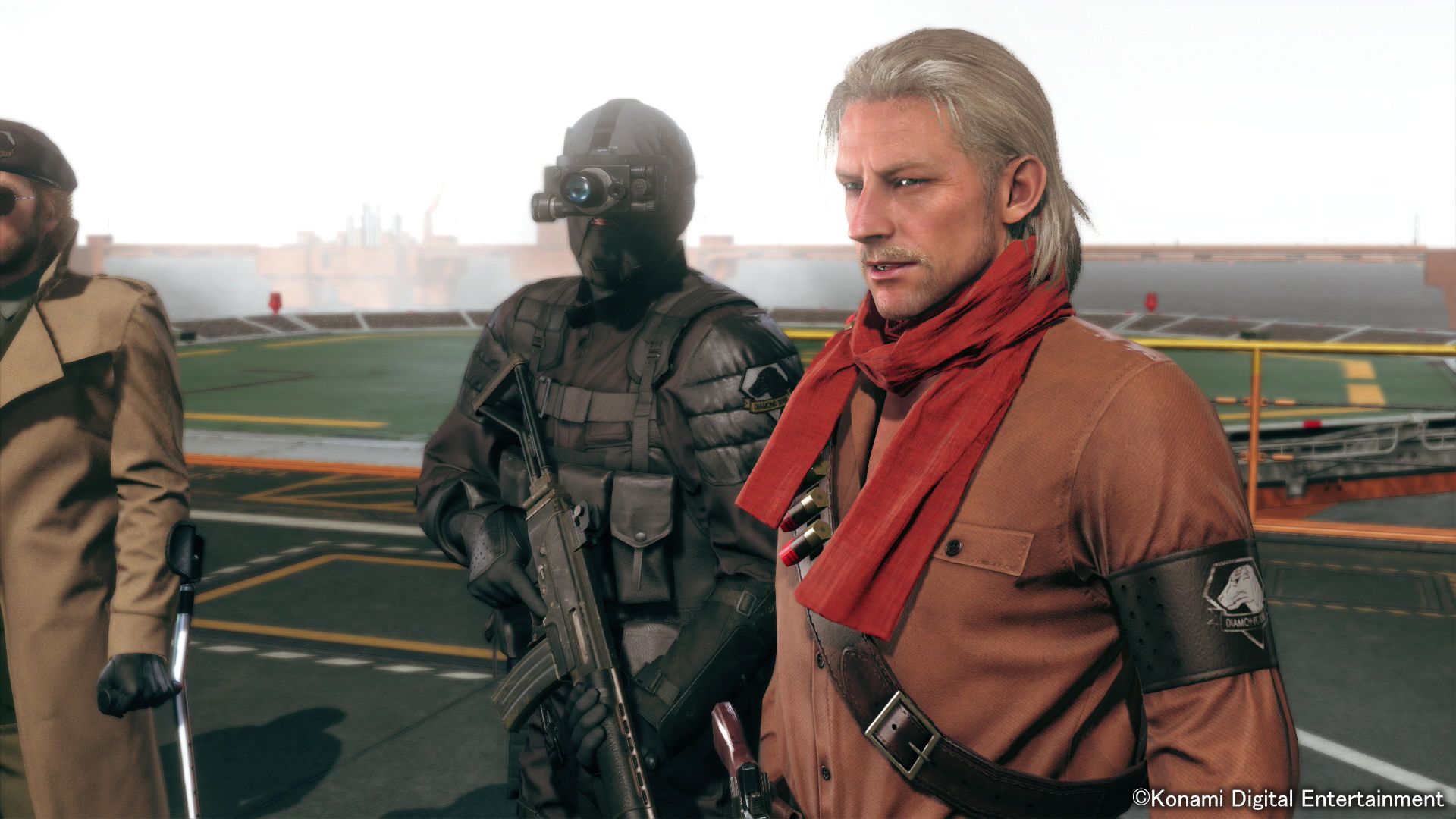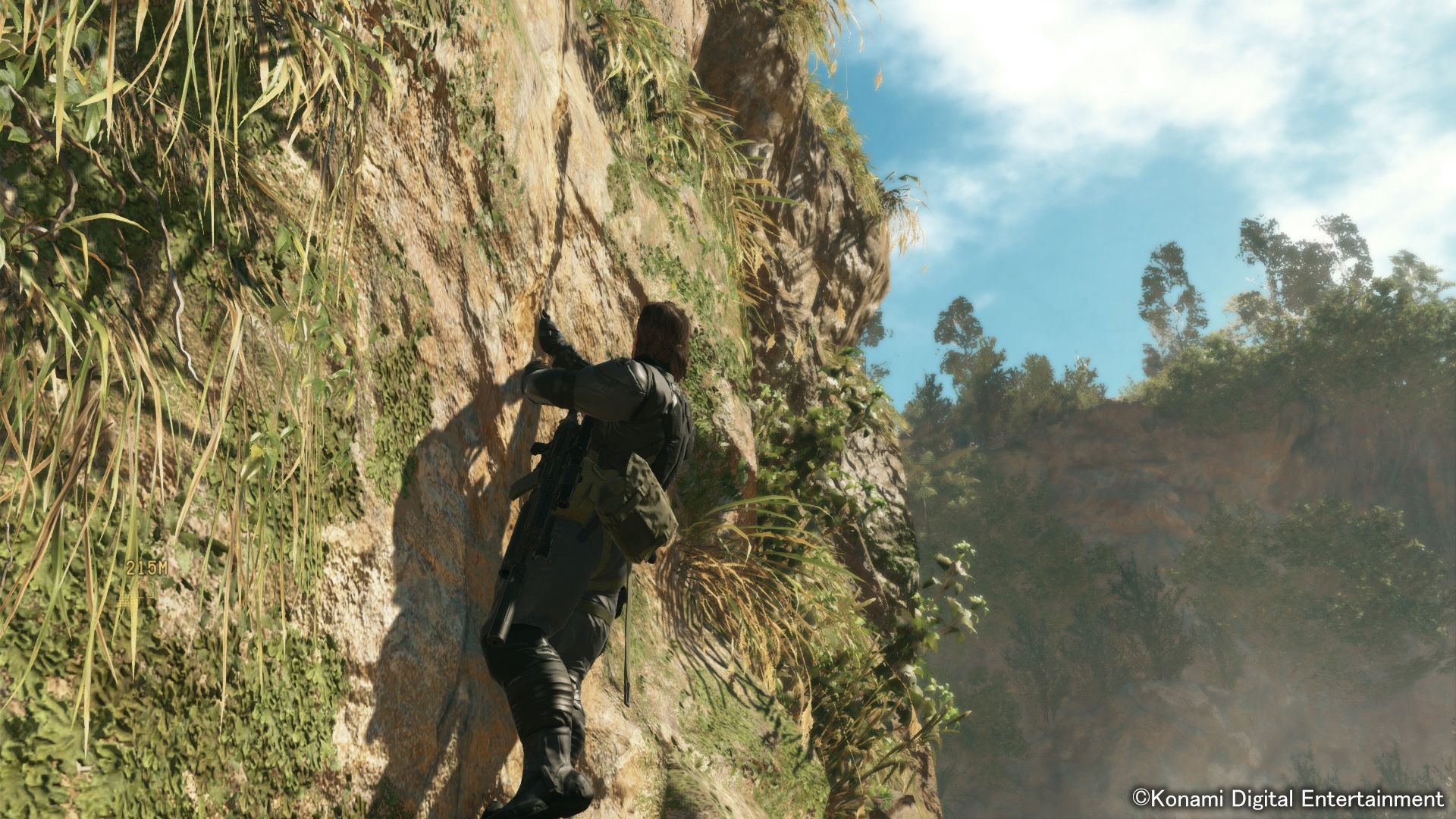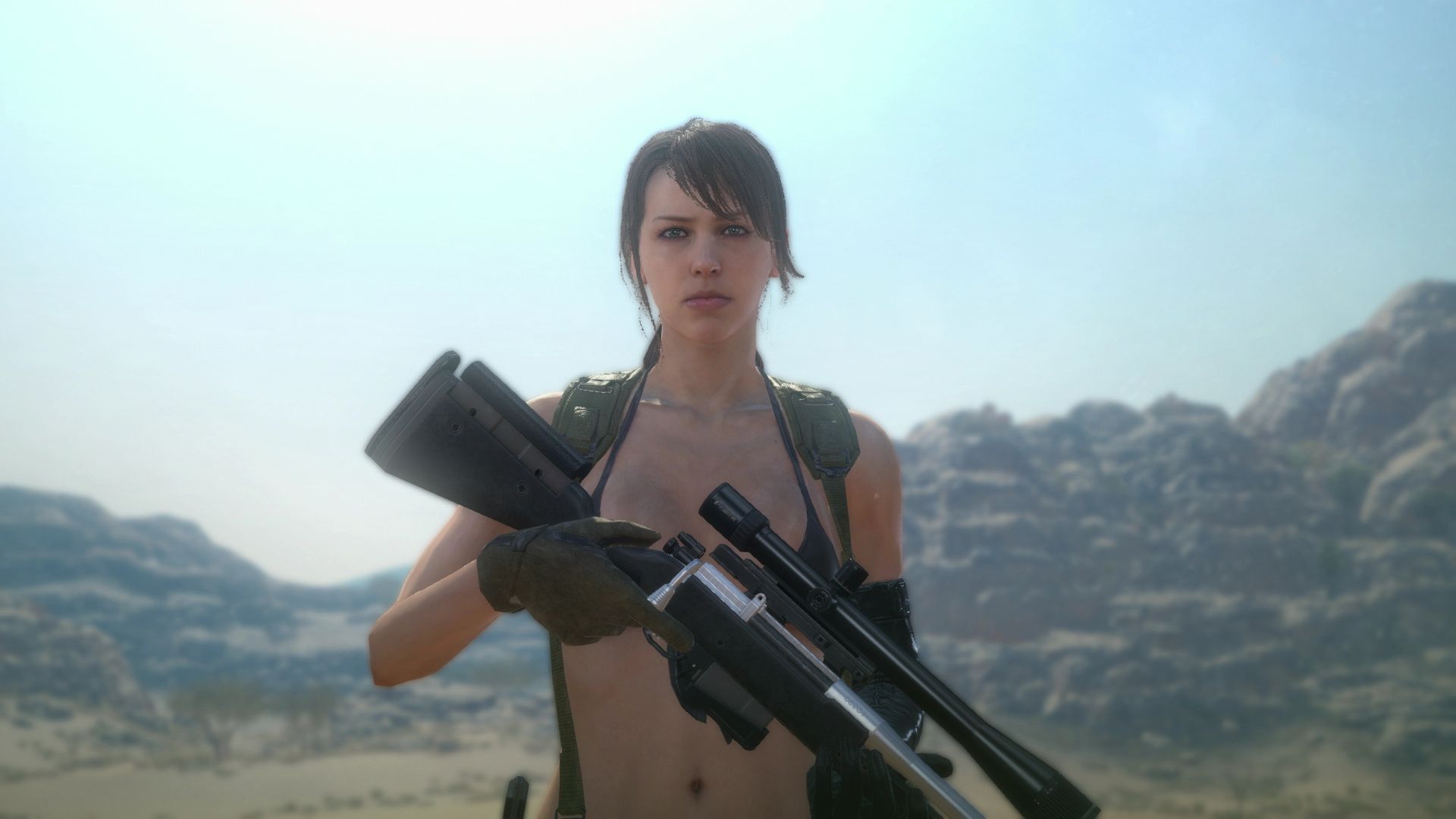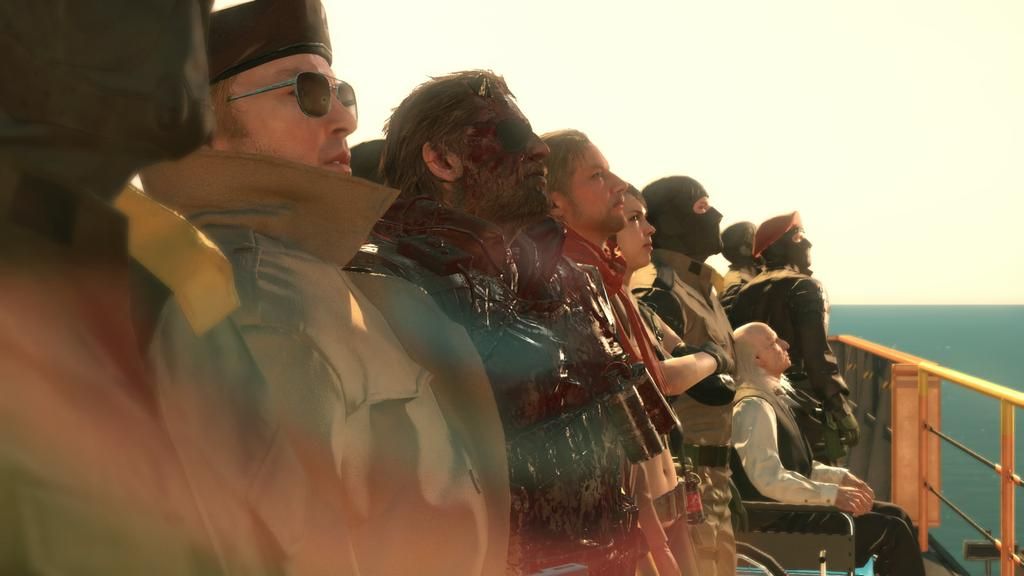Chronicled over nearly three decades and filled with double-crosses, time paradoxes, and several healthy doses of "WTF?!" in every game, Metal Gear Solid has stood as a landmark series in the history of gaming, and Hideo Kojima's tale of tactical espionage action has unfolded over a lengthy but compelling timeline.
With the series' latest release, it's attempting to wrap all that up with an intricate, expansive swan song that bridges the Metal Gear storyline in a way that only the word "epic" can define.
After a lengthy development cycle and a much publicized dispute between publisher Konami and series creator Hideo Kojima, the long-awaited Metal Gear Solid V: The Phantom Pain has finally arrived, and for many its release will be a mixture of excitement and bittersweet bliss at what may be the final Metal Gear title, or at the very least the last directed by Hideo Kojima.
Whether it is indeed the final release from the series and a send-off to one of gaming's greatest auteurs, The Phantom Pain's subtitle is apt for the emotions it conjures: the loss of a limb, but the sensation that it is still a part of you.
In some ways it's appropriate for the unfortunate circumstances surrounding Metal Gear's potential sendoff, but in nearly every way The Phantom Pain ensures that the series is being honored at its absolute highest.
Set in 1984, the game puts players into the role of Venom "Punished" Snake, otherwise known as the illustrious Big Boss, as he begins the process of establishing Outer Heaven, his mercenary group Diamond Dogs, and enacting revenge on those that sent him into a nearly decade-long coma.
From the harrowing opening moments as Snake escapes from a hospital under siege to encounters with supernatural foes, The Phantom Pain wastes no time in establishing itself as a more serious take on the often bizarre storyline, while at the same time establishing itself as an almost entirely new experience.
The trademark series elements are all more-or-less there: absurd plot points and wild action setpieces? Check. Over-the-top enemies with supernatural powers? Check. Random jokes involving cardboard boxes and/or horse poop? Double check.
The Phantom Pain is without a doubt a Metal Gear experience like any other, though its most radical departure from previous games comes from opening up to an expansive, almost staggering open world structure.
As Big Boss awakens from his coma and unravels the events of Metal Gear Solid V: Ground Zeroes, the primary course of action for players comes down to taking on elaborate missions and rebuilding the Boss' private military group, the Diamond Dogs.
It's here that The Phantom Pain establishes a bold direction for the series by taking players into an open world where player choice and tactics play a greater role than ever before.
As Boss' cohorts Revolver Ocelet and Kaz remind you numerous times over radio calls, the choice is entirely yours in how you approach a mission and see it to the end, making The Phantom Pain a liberating experience where almost anything can happen.
That openness toward choice and giving players firm responsibility of what to do and how to do it also extends into Big Boss' Mother Base, where players assume control over the oceanbound station and seeing it all the way through recruitment, financing, and more.
Though an optional part of the game in the loosest sense of the word, managing and maintaining Mother Base is a time-sink in one of the best possible ways, as you're fully responsible for its development and maintenance over the course of the game, from top to bottom in building up your private army, figuring out what weapons, equipment to gear to develop, and more.
Mother Base is a pretty deep and extensive system on its own, so much so that it may be a little intimidating at first glance. The system itself takes a little getting used to, as Big Boss can manage it entirely from the palm of his hand with the iDroid: if you're not quite into shifting through lots of menus and statistics, Mother Base may be a bit too much management for somes' taste.
While spending a lot of time in its deep menus and stat management may be off-putting to some, its highly suggested to invest in the system as it ties in heavily to your progression in obtaining new weapons, gear for your buddies, and more. Once you get the hang of it all, it becomes quite an addicting and satisfying part.
Of course that goes without saying as recruiting soldiers for your Mother Base is made all the more satisfying by literally kidnapping them on the field by knocking them out and attaching a rocket-propelled Fulton recovery device to them, sending them soaring back to your base.
Even after 30+ hours of tranquilizing or knocking out soldiers, I always got a chuckle out of the bizarre but funny animation of attaching a rocket balloon to soldiers and sending them sky high: a great example of how The Phantom Pain still retains Metal Gear Solid's quirky sense of humor, even with a far more serious tone.
The open-world structure is a whole new beast of its own for the series: something closer to an experience that you'd get if you combined Far Cry 3 with Red Dead Redemption than you might expect from the more traditional Metal Gear experience.
Where previous Metal Gear titles were by-and-large linear in structure, The Phantom Pain includes a huge number of options to customize your weapon load out, gear, vehicles, Buddies, and even down to your PMC emblem and the color of your Mother Base.
Most open world games let you tinker with the world and characters to an extent, but the degree that this title allows character customization (which are even reflected in the game's cutscenes) is pretty impressive.
As you explore the massive expanses along Afghanistan deserts or in the northern regions of Africa, players take on a variety of missions broken down into two categories of either main story-based missions or goal-oriented Side Ops.
The story missions are as expected in progressing through the main plot, though Side Ops hold just as much importance no matter the goal, whether it's extracting a prisoner/person-of-interest, assassinating targets, or gathering intel and blueprints.
Nearly everything that The Phantom Pain has to offer provides value to the player's progression, and there's simply a ton of it. Even after completing the main story and a hefty amount of Side Ops I'm still only in the 40-45% range of overall completion, with still many more side missions to complete and regions to explore.
The beauty of the open world structure comes with the title's complete willingness to let you just roll with it; virtually every mission can be completed in whatever fashion you deem appropriate, or whatever tactic you find best-suited for the task. That freedom shows through the mission design, as I employed as many different takes as possible in completing objectives differently.
While I tend to go with the stealthy approach and a tranquilizer dart to the head to take out enemies non-lethally, the game not only embraces different play styles but often forces you to adjust mid-mission, creating more on-the-fly objectives where you have to think fast and adapt even more quickly.
Several scenarios showed this, and even in the instances where I was caught by enemy soldiers and thought I flubbed an entire mission, I still managed to adapt and have Big Boss come out on top.
In one case where I had to eliminate a nefarious drug lord, a prior alert I set off now had him surrounded by enemy guards to make the situation around his death/capture way more difficult. But instead of opting for an easier route, I adapted.
By throwing a decoy and distracting the guards, my vantage point allowed me to pick off the guards one-by-one with a silenced assault rifle and once he was by himself, go in for the kill with my target: mission accomplished.
While I tended to go for the more stealthy options, there are routes for every players' style to complete a mission -- either the silent method or going all-out with guns blazing -- and all of those options work to varying degrees.
Whether it's tailing an enemy vehicle and having to adapt as it unexpectedly careens off the road or skillfully taking out enemies with silenced tranquilizer darts, The Phantom Pain shows Metal Gear Solid gameplay at its absolute finest with a wealth of options, items, and gear to complete missions however you see fit.
Even with so many options available, it toes the line just right between not being overly hand-holding, while offering just enough guidance for Big Boss' success out on the field.
The open world offers so many possibilities for players that it's almost daunting, and while it's arguably the biggest innovation brought to the series, it's also one that introduces the more divisive elements of Metal Gear Solid V.
The giant maps boast tons in the way of missions and objectives to complete, though by comparison the open world itself never quite features the same level of detail and that feeling of the world feeling like a "world" that other titles in its genre have achieved, like the previously-mentioned Far Cry 3 or Red Dead Redemption.
As much as I drew delight from using Fulton recovery balloons to send enemies sky high, it feels more like vast expanses of space rather than a living and breathing world, made more apparent that getting around the world can be a bit of a pain at points.
While the game offers vehicles that can be capture or your buddy D-Horse at a moment's notice, fast-traveling is more limited to calling in support helicopters for a lift, which takes a lengthy amount of time and even then the choppers can only land at specific zones that could still be a decent trip from your objective.
Compared to the more story-driven nature of previous Metal Gear games (including the infamously-long cutscenes of Metal Gear Solid 4: Guns of the Patriots), The Phantom Pain throws almost all its eggs into the basket of gameplay versus its story, with the plot being brisk in comparison.
It's a pretty radical departure from the particular brand of storytelling that Hideo Kojima and company have been known for the last 28-odd years, in ways both welcome and a bit rough around the edges. Gone are the 30+ min. cutscenes in favor of shorter, more impactful scenes; however, they tend to be very few and far between from its lengthy gameplay segments.
Gone as well are the iconic codec calls with talking heads that have been a staple of previous Metal Gear games in favor of cassette tapes that players can (and really should) listen to at their will through Big Boss' iDroid.
It's a novel approach to storytelling as you can listen to cassette tapes at any time while exploring or sneaking around, though with the dense amount of context they provide to the game's story, I much preferred listening to them either in the airborne command center or while not doing other actions to focus solely on them.
This also comes on top of the slightly annoying feature that rather than stopping the tape and picking up at a later point, radio calls from Ocelot, Kaz, or other team members will simply play over the tape you're listening to at that moment, creating a bit of a distraction if you're trying to invest in the numerous amounts of lore that The Phantom Pain provides.
Where previous Metal Gear titles could clock in between 10-20 hours (depending on which one you're playing), players of the fifth installment should buckle in for a lengthy experience closer to the 30-40 hour range just to get through the main story content.
Experiencing the "true" ending of the title though could take dozens of additional hours and some retreading of previous missions on harder difficulties, a task that already may be a challenge given the game's relatively high difficulty in some sections.
There's a lot of meat on this game's bones that make it a worthwhile and enjoyable experience, though players looking for the more story-driven aspects of the series may find it lacking in comparison, especially with heavy doses of missions, side-missions, and extra objectives serving more as padding for an incredibly long experience than more fulfilling story content.
It's a sure-fire Metal Gear game all its own, though in my time I still haven't really come away with those big "Metal Gear moments" just yet that I had with previous titles. Few moments here really escalate to the levels that events like fighting Psycho Mantis, dispatching The End, or defeating Revolver Ocelot mano-a-mano had in the past.
The Phantom Pain still contains some strong segments likely to please Metal Gear fans, though by comparison the open world structure can make them feel few and far between, and sometimes even a bit unfocused.
Those that played the prologue chapter Ground Zeroes last year will return to a control scheme that's more or less unchanged, and arguably the series' most smoothly-controlling installment yet. As I played through this installment it's night and day comparing how fluidly Big Boss controls and animates.
Where in previous games I often found myself fighting against the game for what I wanted it to do, The Phantom Pain made it effortless between going prone, grabbing enemies, and switching into combat mode.
That attention to control and animation also extends deeply into the game's aural and visual presentation, which is easy to say it simply shines. Boasting impressive visuals that range from the the Afghan deserts at night to the vast expanses of the African wilderness, The Phantom Pain's open world shimmers with crisp detail and a huge draw distance over its mountains, valleys, and fields.
It's made all the more impressive by the game's incredible performance at 60FPS -- only on the very rarest of occasions have I seen the frame rate dip slightly, yet in my dozens of hours with the game it's run consistently at 60 frames and never let up. Given the series' need for accuracy, it's a near flawlessly-performing game from the visual front.
The soundtrack and score are no slouch either as the game is filled with some great selections, especially for 1980s-loving audiophiles.
Cassettes from throughout the world can be obtained and played through Big Bosses' iDroid alongside the numerous audio tapes filling in the backstory, and can even be used with your helicopter's PA system to play as it enters and exits the world.
I dare you not to outfit your helicopter's speakers with classic 80s hits like "Rebel Yell," or the more classically-inclined, setting it to blare "Ride of the Valkyries" at full blast.
Where the series has drawn many fans in with its wacky conspiracies and intricate plots, the characters have always been one of its strongest assets whether they ranged from the bizarre and outlandish to the sympathetic and surprisingly relatable: The Phantom Pain never slouches in that regard.
Series mainstay Revolver Ocelot is brought to life with the signature dramatic flair that the character would be known for by Troy Baker over radio and cutscenes, while Kazuhira "Benedict" Miller also lends a gruffness to his commands during Snake's debriefings.
Much was made prior to the release of The Phantom Pain and Ground Zeroes' release with the recasting of longtime series' voice actor David Hayter being replaced by 24's Kiefer Sutherland in the role of Big Boss, and while it may be a stark change for some, Sutherland's performance for the large part works well with the game's more grounded tone.
While I may miss Hayter as much as any longtime Metal Gear fan, Sutherland's performance as Big Boss works well given The Phantom Pain's more serious tone, though in comparison it wouldn't be remiss if Big Boss' real name was "Quiet" given how little he speaks in the game's cutscenes.
It's a slightly weird quirk of the game as characters like Ocelot and Miller will address Snake and he'll simply stare at them in response or reply with a grunt, with the bulk of Sutherland's performance coming through in the game's cassette tapes and radio calls.
He lends a sense of hardened adversity and pain to Snake's performance in The Phantom Pain, though the little amounts of dialogue he has in the game's cutscenes seem like a missed opportunity especially for such a well-known lead star.
On the other hand, the new faces introduced fit in well with the universe, from the title's big bad Skull Face down to its selection of Buddies that are able to join you on missions. Looking like a burnt-out villain with a Zorro mask, Skull Face fills his generally short amounts of screen time well with a flair for the dramatic and genuinely creepy, crazy vibe over the plot's course.
And while her scantily-clad attire may suggest otherwise, the silent but deadly sniper Quiet evolves over the course of the game into a sympathetic ally and one of the title's most memorable characters with her sincerity and emotion: all the more impressive given she doesn't talk.
Whatever narrative and gameplay troubles that The Phantom Pain may have, it more than makes up for with the sheer amount of content it provides and honing the series to its most expansive, satisfying installment yet: the few nagging bits of it are slight by comparison.
At a first glance, The Phantom Pain is a dramatic change of direction for Metal Gear Solid with its huge open-world and incredibly open-ended mission structure, one which longtime fans of the series may find a big change from the series' "tactical espionage action" it has touted for years.
However, those willing to embrace its slight flaws and changes will be met with a title that is very much Metal Gear Solid at its finest: it's big, it's expansive, and most of all it's bold.
Introducing a completely new style of gameplay to a series that fans have grown and evolved with over nearly 30 years is risky, but The Phantom Pain's gamble resulted in what may be the series' best installment ever: a high compliment to a series that already stands at the stealth action genre's highest peaks.
Metal Gear Solid V: The Phantom Pain may indeed mark the end of an era for Hideo Kojima's much-beloved series due to unfortunate circumstances, the results of which are still unraveling and leaving the future of Hideo Kojima and Konami unclear.
However, this entry in the franchise is not to be interpreted as a funeral for what is likely the end of a classic series: it's a celebration of what a great series has become, and for that it deserves an honorable discharge.
Metal Gear Solid V: The Phantom Pain
- Franchise
- Metal Gear Solid
- Released
- September 1, 2015
- Developer(s)
- Kojima Productions
- Publisher(s)
- Konami
- Genre(s)
- Action , Open-World
- ESRB
- M for Mature: Blood and Gore, Intense Violence, Sexual Themes, Strong Language

